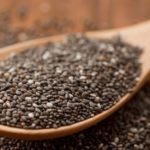Stinkweed is an ingredient with a unique aroma, often turned into delicious dishes by the people of Northwest Vietnam. Today, we will introduce you to this special specialty of the Northwest!
1 What is Stinkweed?
Stinkweed, known as “pắc nam” in the Thai ethnic language, is a wild-growing vine with dark green, symmetrical, compound leaves. The stinkweed plant has a long stem, branches, and sharp thorns on its leaves and young shoots. The leaflets are rather small, slightly elongated, and cupped together, forming the most delicious part used in cooking.
The name “stinkweed” comes from the plant’s strong and distinctive odor. However, during the months of March to June, in the mountainous areas of the Northwest such as Son La and Dien Bien provinces, locals go out to pick the young shoots and leaves to use as herbal medicine or to cook unique, rustic, yet delicious dishes.
 Overview of Stinkweed – A Specialty of the Northwest Mountains
Overview of Stinkweed – A Specialty of the Northwest Mountains
2 What’s So Special About Stinkweed?
The Aroma of Stinkweed
When harvesting this vegetable, locals are very careful to avoid the sharp thorns. The unique characteristic of this plant is that after picking, the strong odor and crispness diminish over time. Therefore, they usually cook it immediately to preserve its flavor.
 Locals cook stinkweed immediately after harvesting
Locals cook stinkweed immediately after harvesting
Benefits of Stinkweed
In addition to being used in various mouthwatering dishes, stinkweed is also considered a medicinal herb that helps treat joint pain and has excellent cooling properties. For this reason, it has attracted many urban tourists to the Northwest, who also favor using this plant during hot and sultry summers.
Moreover, thanks to its cooling properties, stinkweed is a natural remedy for liver, kidney, and stomach ailments. It helps reduce excess stomach acid and alleviates conditions such as bitter mouth, stomach pain, and more.
 Stinkweed has multiple health benefits
Stinkweed has multiple health benefits
3 How to Cook with Stinkweed
Although it is just a wild vegetable, stinkweed can be used to create enticing dishes, such as:
Stinkweed, Wild Bitter Melon, and Dried Pork Salad
This dish is quite unique and new, and it is a characteristic dish of the Northwest culinary culture. With the fresh and savory flavors of pork and wild bitter melon, combined with the crispness and sweetness of stinkweed, your taste buds are sure to be awakened from the very first bite.
Preparing this dish is simple. After pre-processing the stinkweed, wild bitter melon, and dried pork, boil the stinkweed and wild bitter melon, then drain and place them in a large bowl. Season to taste, then steam the dried pork, shred it, add it to the bowl, and mix well before serving.
 Stinkweed, Wild Bitter Melon, and Dried Pork Salad
Stinkweed, Wild Bitter Melon, and Dried Pork Salad
Stinkweed and Pig Tail Soup
This dish is both strange and familiar, offering fresh and sweet flavors from the stinkweed and the richness of the broth, while also providing various nutrients such as collagen, calcium, and more.
After pre-processing the pig tail and stinkweed, simmer the pig tail until it is tender. Clean the stinkweed and add it to the soup, along with seasonings, and cook for about 3-5 minutes before serving to retain the crispness, sweetness, and beautiful green color of the stinkweed.
 Stinkweed and Pig Tail Soup
Stinkweed and Pig Tail Soup
Stinkweed and Bamboo Shoots Stir-Fry
Stinkweed and bamboo shoots stir-fry is a familiar dish in the daily meals of the people of the Northwest. It usually has a fresh, sweet, and crisp taste and is favored during the summer for its cooling properties.
To prepare this dish, first, remove the young shoots of the stinkweed and clean it, then peel the bamboo shoots and cut them into bite-sized pieces before cleaning and draining them. Next, heat a pan, add oil and garlic, and stir-fry the bamboo shoots with seasonings for about 2 minutes before adding the stinkweed and continuing to stir-fry for 5-7 minutes until cooked.
 Stinkweed and Bamboo Shoots Stir-Fry
Stinkweed and Bamboo Shoots Stir-Fry
Grilled Fish Stuffed with Stinkweed
This dish, originating from the Northwest, is not only visually appealing and aromatic but also offers a crispy fish skin, fresh and sweet fish meat, and the spicy and juicy stinkweed stuffing.
First, prepare a relatively large fish and clean and scale it. Clean and chop the stinkweed, then mix it with salt, sugar, pepper, and other seasonings. Stuff the fish with this mixture, rub it all over, fold the fish, and grill it until the skin is golden and crispy.
 Grilled Fish Stuffed with Stinkweed
Grilled Fish Stuffed with Stinkweed
Now you know about stinkweed, a very special specialty of the Northwest! We hope that after reading this article, you will have the opportunity to visit the Northwest and enjoy the delicious dishes made from this unique ingredient.



































